Tips for Learning a New Piece
Learning a new song or piece can be daunting if you don't approach in the right way. There are many things you can do to make learning any music easier. Keep in mind that these are tips that may work for some people and not others. Try the various approaches discussed below and see which ones work for you.
Practice in Sections
Many beginners try to learn new music by playing the piece from the beginning to the end over and over. This is a bad way to learn music. Any new piece you learn should be broken into sections. The most ideal way to do this is to make sections based on the structure of the music. This requires knowledge of music theory, since you need to understand where things like cadences occur. A cadence, the end of a musical phrase, etc. are logical places to create a section.
Each section should overlap with the next section. You should choose sections so that the end of one section is the beginning of the next. This is to allow you to get used to playing the transitions between the sections while practicing. This will facilitate playing the whole piece later on since you will have already practiced connecting the beginnings and ends of each section.
Sections don't have to be equal in length. Use smaller sections when there is a difficult passage. These passages will require more practice, so they should be broken up into smaller chunks. You could even have a section that is smaller than a measure. On the other hand, a simple repetitive riff or lick that occurs over many measures could be a single section since it won't take as much practice to learn.
Work on the Things that are Most Difficult
If you are learning a new piece, don't focus on those things that are the easiest or most fun to play. Work on the parts that are the hardest to play and then add the rest of the piece once you can play the difficult parts.
Practice Slowly at First
Avoid the temptation to play the piece too fast when you start learning it. This will usually lead to bad habits that limit how well you play the music. Go very slowly and make sure you are playing correctly.
You shouldn't increase the tempo until things like rhythm and technique are perfect at a slower tempo. The tempo should be increased very gradually. If the music becomes difficult at a faster tempo, you may need to spend more time practicing it at a slower tempo.
Learn the Piece Backwards
An interesting approach to learning a piece is to start at the end and work your way backwards. This can be done measure by measure or by section. Try this to see if it works for you.
Learning Difficult Music
Break Music into Its Most Basic Parts
You don't have to practice the music exactly as written in order to get to a point where you can play it. It is possible to separate the tasks of each hand so that you can concentrate on just that hand. For example, in the following funk riff, you have a somewhat difficult strumming pattern for the right hand and challenging chord changes for the left hand:
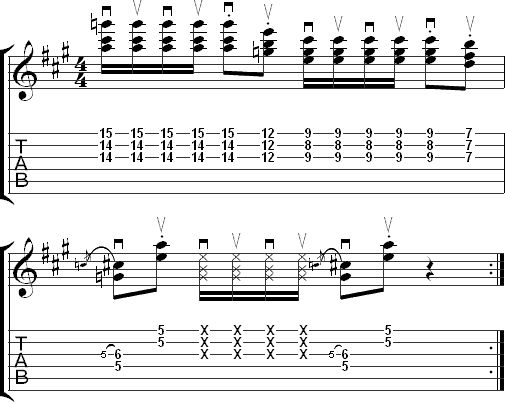
This could be simplified by just playing the pattern with the right hand like this:
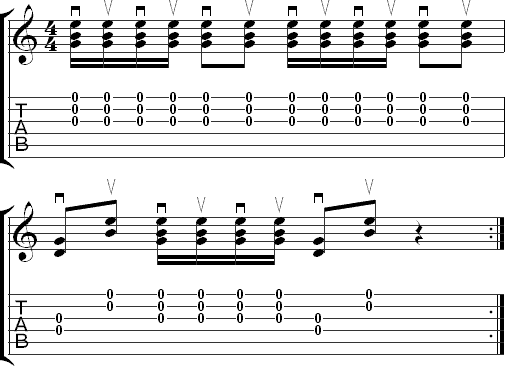
You can also apply this to the left hand by playing just the chords:
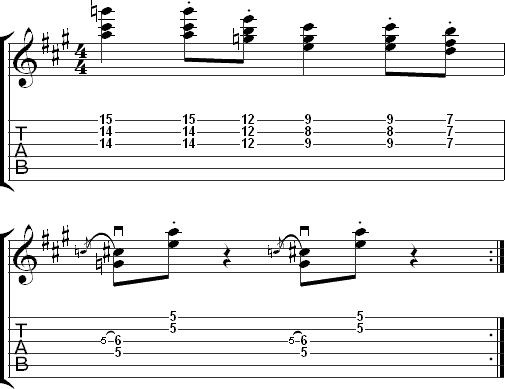
Once you have the right and left hand parts learned, try combining them. You should notice that the original riff is much easier to play.
Make an Exercise of the Music
You can take any difficult passage and make an infinite number of exercises from it that will facilitate learning that passage more easily. Below is a short passage from the 16th Caprice by Paganini:
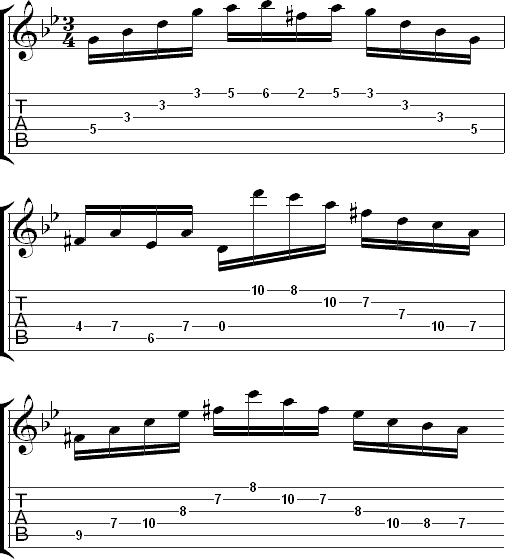
This passage can be practiced in numerous ways to make it easier to learn. Below are a few of the most common approaches to dealing with passages like this. However, you should try creating your own exercises if these suggestions don't work for a particular situation.
Dotted rhythms
Below is the first measure of the Caprice in dotted rhythms:
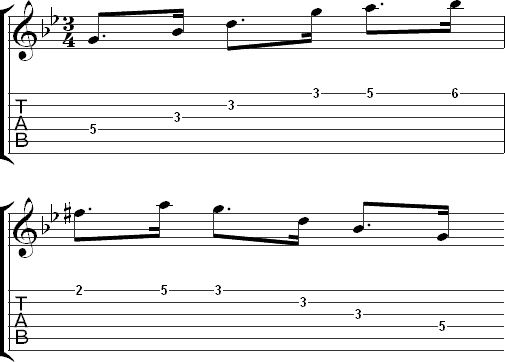
This could also be practiced by starting with a sixteenth note and alternating with a dotted eighth note.
Repeating each note
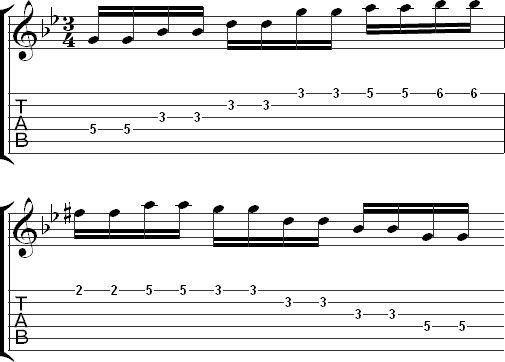
Including a period of rest between groups of fast notes
Try playing four sixteenth notes in a group and land on the next note, holding it for a quarter note. Do this throughout the entire passage of sixteenth notes. This allows for a short rest between each group of sixteenth notes, which makes it easier to achieve faster tempos. As you get better at this, start trying to play longer passages of sixteenth notes, such as eight, twelve, or sixteen, before pausing on the first sixteenth note of the next group.
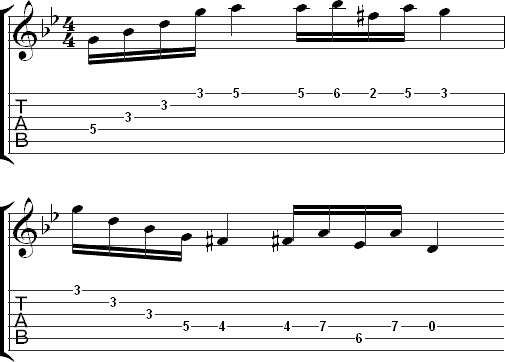
Choosing Fingerings
Choosing fingerings can be one of the hardest parts of learning new music. A good fingering will make the music easier to play and the musical effects, such as dynamics and articulation, easier to achieve. A bad fingering could cause mistakes, lack of control, or even lead to injury.
The first fingering you try may not always be the best. Don't be afraid to experiment with different fingerings even after practicing something for a long time. Here are some general tips on how to choose the best fingerings:
Scale and Arpeggio Fingerings
Use standard fingerings for scales, arpeggios, and chords. This is a good starting point, but may not work in all cases. For example, a lot of fingerstyle music requires non-standard chord fingerings to facilitate smoother chord changes and to allow another voice to keep ringing.
Know Where You are Going
The most important aspect of fingering is getting from one note or chord to the next. This isn't a big problem if the music stays in one position, but some music may require you to shift positions on the neck. There are often several options for when to do this and which fingers to use. You need to experiment to figure out what is the best option.
Fingering Should Serve the Music
Some fingerings are better than others for achieving certain musical effects, such as articulation and dynamics. For example, if you need to play legato, choose a fingering that facilitates this. This may not always be the easiest or most comfortable fingering.
Test Fingerings at Tempo
Try fingerings at the tempo at which you intend to play the music you are learning. Your playing may be very sloppy and you may miss half the notes, but trying the fingering out at a faster tempo can give you an idea of whether it will work once you get the music up to speed. This approach may reveal things that aren't obvious at a slower tempo, such as a position shift that is awkward with that fingering when played up to tempo. It would be better to find this out early rather than practice a bad fingering and then having to change it later.
